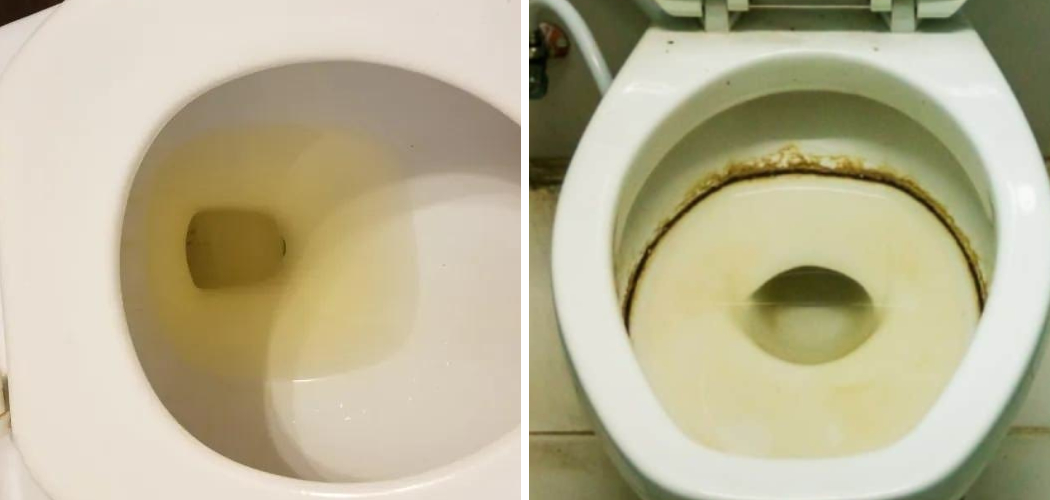Dealing with yellow water in the toilet can be both unsightly and concerning, as it often indicates underlying issues with water quality or plumbing. In this informative guide, we’ll explore effective methods for how to fix yellow water in toilet and restore the cleanliness and clarity of your toilet bowl.
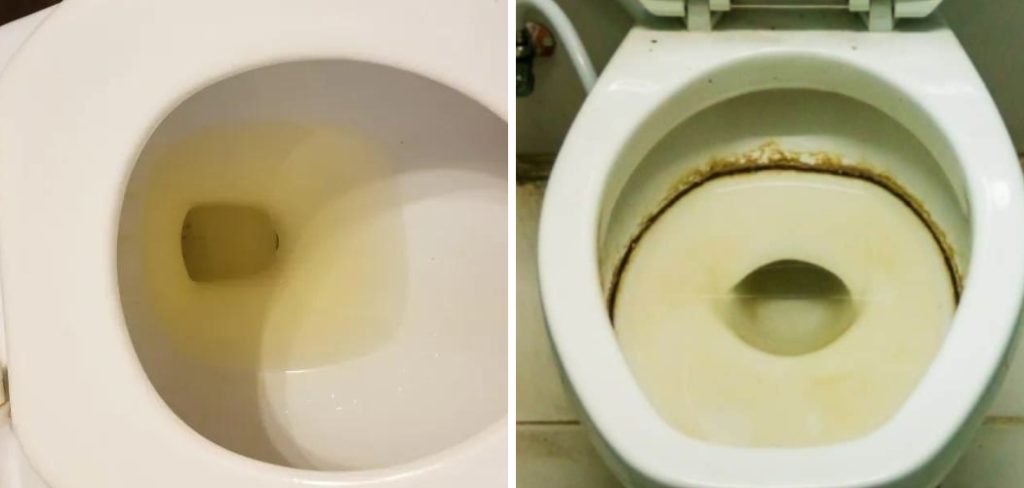
From addressing mineral deposits and sediment buildup to testing and treating water quality issues, we’ll cover a range of solutions to help you identify and resolve the root cause of yellow water. Whether you’re experiencing occasional discoloration or persistent yellowing, mastering the art of fixing yellow water in the toilet will help you maintain a hygienic and aesthetically pleasing bathroom environment for you and your family.
Importance of Addressing Yellow Water in the Toilet
Ignoring yellow water in your toilet is not just a matter of aesthetics; it can indicate more significant health and plumbing issues. Firstly, yellow water could be a sign of contamination. This discoloration often signifies the presence of minerals, such as iron, or even contaminants that could pose health risks upon exposure or ingestion.
Secondly, if left unresolved, the underlying causes of yellow water, like rusted pipes or degraded plumbing fixtures, may deteriorate further. This can lead to costly repairs or replacements in the future. Therefore, identifying and addressing the root cause of yellow water promptly ensures the safety and well-being of your household while preserving the integrity of your plumbing system.
Common Causes of Yellow Water
Several factors can lead to the appearance of yellow water in the toilet, each varying in severity and required approach for resolution. Understanding these common causes is the first step towards diagnosing and solving the issue.
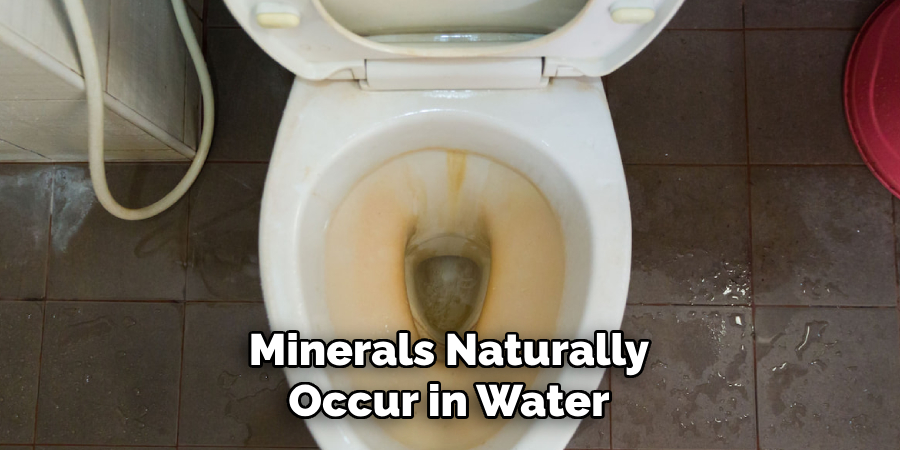
- Mineral Deposits: High levels of minerals such as iron, manganese, and magnesium in your water supply can cause yellow discoloration. These minerals naturally occur in water and can concentrate over time, especially in areas with hard water.
- Rust in Pipes: Old or corroded plumbing can release rust into the water, giving it a yellow to brownish hue. This is more common in older homes with metal pipes that haven’t been replaced or lined with protective materials.
- Sediment Buildup in Water Heater: For homes that use tank-based water heaters, sediment can accumulate at the bottom of the tank over time. This sediment can include minerals that tint the water yellow when disturbed.
- Bacterial Growth: Certain types of bacteria can thrive in water systems, especially in stagnant environments. These bacteria can produce a yellow or orange slime, affecting water color and quality.
- Municipal Water Supply Issues: Sometimes, the cause of yellow water originates from the municipal water supply, due to pipe maintenance, contamination, or system upgrades. This cause is often temporary and resolved once the municipal issue is addressed.
Identifying the exact cause of yellow water in your home may require further investigation, including water quality testing and inspection of plumbing systems. Once the cause is identified, appropriate measures can be taken to treat the yellow water effectively.
Mineral Buildup and Sedimentation
Mineral buildup and sedimentation in your plumbing system can significantly contribute to the yellow water issue in toilets. This problem is particularly prevalent in areas with hard water, which is high in minerals like calcium, magnesium, and iron. These minerals can accumulate over time, coating the inside of pipes, water heaters, and toilet tanks, which can lead to the discoloration of water.
To combat this issue, it’s advisable to install a whole-house water softener system if you live in a hard water area. A water softener will help reduce the concentration of minerals in your water supply, preventing their accumulation. For existing buildup, flushing your water heater regularly can help remove sediment from the tank. Additionally, cleaning your toilet tank with a vinegar solution can dissolve some mineral deposits, improving water clarity and color.

In cases where mineral buildup has reached a critical point, it may become necessary to consult with a professional plumber. They can assess the extent of sedimentation and recommend more thorough cleaning methods or replacements for severely affected parts of your plumbing system. Acting promptly on these recommendations can prevent the problem from worsening and ensure that your water quality remains safe and clear.
Sources of Rust or Iron Contamination
Rust or iron contamination in your water supply can be a significant contributor to the yellow water problem in toilets. This type of contamination primarily originates from two sources: your own home plumbing system or the municipal water supply.
- Home Plumbing System: Homes with older, galvanized pipes are particularly prone to rust and corrosion over time. As these pipes deteriorate, rust particles can release into the water, leading to discoloration. This issue is exacerbated if the water has a high iron content, further promoting pipe corrosion. Additionally, water heaters can also be a source of rust contamination, especially if they are old or not maintained properly. Sediment and rust can accumulate at the bottom of the tank, and when disturbed, can be distributed throughout your home’s water supply.
- Municipal Water Supply: In some cases, the source of rust or iron contamination can trace back to the municipal water supply. This may occur due to the corrosion of municipal pipes, especially in older water systems that have not been updated or properly maintained. During periods of maintenance or if there is a breach in the pipes, rust particles can enter the water supply, affecting water quality for downstream users. Additionally, if the source water used by the municipality has high levels of iron, this can also contribute to the yellow water seen in homes.
Addressing rust or iron contamination involves identifying the exact source of the problem. If the issue lies within the home plumbing system, replacing old pipes with modern, corrosion-resistant materials and regularly maintaining water heaters can mitigate the issue.

For contamination stemming from the municipal supply, installing point-of-use filters or whole-house filtration systems designed to remove iron and rust can improve water quality. In either scenario, it might also be beneficial to communicate with local water authorities if you suspect the problem is not isolated to your home, as they may provide additional insights or take corrective actions to address wider concerns in the water supply system.
10 Methods How to Fix Yellow Water in Toilet
1. Clean the Toilet Tank:
Start by cleaning the toilet tank to remove any sediment or mineral deposits that may be causing the water to appear yellow. Turn off the water supply to the toilet and flush to drain the tank. Use a toilet brush and a solution of vinegar and water to scrub the inside of the tank, focusing on areas with visible buildup. Rinse the tank thoroughly with clean water before turning the water supply back on.
Toilet tanks are often overlooked when it comes to cleaning the bathroom, but they can quickly accumulate grime and bacteria. In addition to causing yellowing of the water, a dirty toilet tank can also lead to unpleasant odors and even clog the toilet.
Regularly cleaning the toilet tank not only keeps your bathroom looking clean, but it also helps maintain proper functioning of the toilet. Mineral deposits and sediment can build up over time, causing problems with the flushing mechanism and potentially leading to costly repairs.
2. Check the Water Supply:
Yellow water in the toilet may be caused by issues with the water supply, such as sediment or rust in the pipes. Check the water supply to the toilet by turning off the shut-off valve and flushing the toilet to drain the tank.

Then, remove the supply line from the toilet tank and inspect it for any signs of debris or discoloration. If necessary, replace the supply line with a new one to ensure clean water flow to the toilet. It is also important to regularly clean out any sediment or rust buildup in the pipes to prevent future issues with water supply.
To maintain a healthy and safe water supply, it is also recommended to have regular water quality testing done. This can help identify any potential issues with the water supply, such as high levels of minerals or contaminants, which could be causing discoloration in your toilet water. If any issues are found, a professional plumber should be consulted to determine the best course of action.
3. Flush the Water Heater:
Sediment buildup in the water heater can contribute to yellow water in the toilet. Flush the water heater to remove any sediment that may be causing the discoloration. Turn off the power or gas supply to the water heater and shut off the cold water supply.
Attach a garden hose to the drain valve at the bottom of the water heater and open the valve to drain the tank. Flush the tank with clean water until the water runs clear before closing the valve and refilling the tank. This process should be done annually to maintain the efficiency and longevity of your water heater.
4. Install a Water Filter:
Installing a water filter on the toilet’s supply line can help remove impurities and improve water quality, reducing the likelihood of yellow water. Choose a water filter specifically designed for removing sediment, rust, and other contaminants from the water supply. Install the filter according to the manufacturer’s instructions, ensuring that it is compatible with your toilet’s plumbing system. Once installed, regularly replace the filter cartridges to ensure continued effectiveness.
There are many different types of water filters available on the market. Some use activated carbon to absorb impurities, while others use reverse osmosis or UV light to purify the water. It’s important to do some research and choose the right type of water filter for your specific needs.
5. Use a Water Softener:
Hard water containing high levels of minerals like calcium and magnesium can contribute to yellow water in the toilet. Install a water softener to treat hard water and prevent mineral buildup in the toilet and other plumbing fixtures.
Water softeners work by replacing minerals with sodium ions through a process called ion exchange. Follow the manufacturer’s instructions for installing and maintaining the water softener to ensure optimal performance. Regularly check the salt levels in the brine tank and add more as needed.
6. Clean the Toilet Bowl:
In addition to cleaning the toilet tank, clean the toilet bowl to remove any stains or discoloration that may be contributing to yellow water. Use a toilet bowl cleaner specifically formulated to remove stains and mineral deposits. Scrub the inside of the toilet bowl with a toilet brush, focusing on areas with visible discoloration. Flush the toilet to rinse away the cleaner and reveal a clean, white toilet bowl. Repeat this process as needed to remove any stubborn stains.
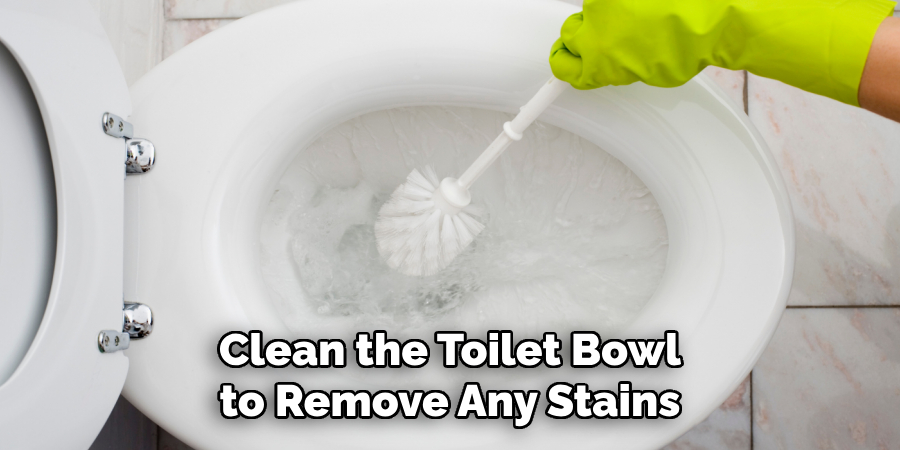
To maintain a clean and fresh toilet bowl, consider using a toilet bowl cleaner with bleach or baking soda. These ingredients can help combat bacteria and odors, keeping your toilet bowl looking and smelling clean. You may also want to invest in an automatic toilet bowl cleaner that can be placed inside the tank for continuous cleaning and freshness.
In addition to using cleaning products, regularly scrubbing the toilet bowl with a brush and flushing with hot water can also help keep it clean. It is recommended to clean the toilet bowl at least once a week, or more frequently if there are multiple users in the household.
7. Inspect the Toilet Flapper:
A faulty toilet flapper can allow water from the tank to leak into the bowl, causing discoloration and yellow water. Inspect the toilet flapper for any signs of damage or deterioration, such as cracks or tears.
Replace the flapper if necessary to ensure a proper seal and prevent leaks. Consider upgrading to a high-quality flapper with a durable construction to prevent future issues. Additionally, regularly cleaning the flapper with a mild soap solution can help extend its lifespan and maintain its functionality.
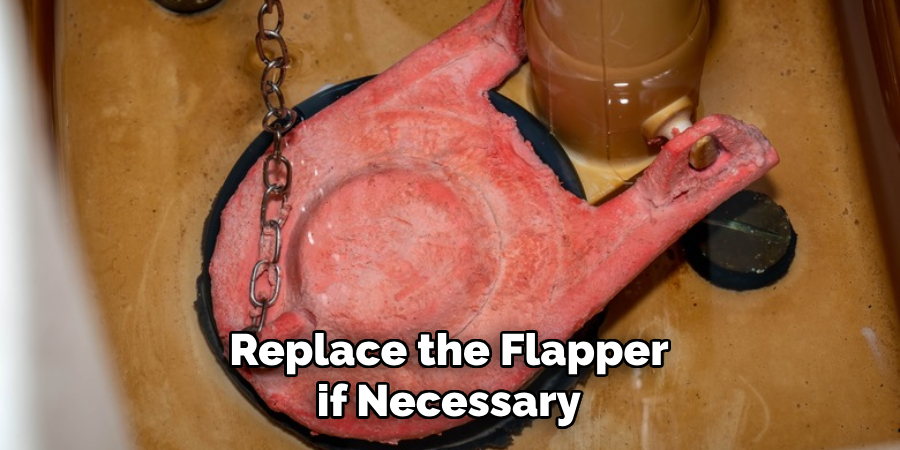
Other common causes of yellow water in toilets include rust or sediment buildup in the tank. If you notice any discoloration or particles in the tank, it is important to address these issues promptly. Regularly flushing out the tank by turning off the water supply and draining it can help remove any buildup and maintain clean, clear water in the tank.
8. Test the Water Quality:
Test the water quality to determine if contaminants are present that may be causing yellow water in the toilet. Purchase a water testing kit from a hardware store or have a professional water testing company perform an analysis.
Test for common contaminants like iron, manganese, and sulfur, which can cause water discoloration and foul odors. Based on the test results, take appropriate measures to treat any water quality issues. This can include installing a filtration system or adding specific chemicals to the water supply.
9. Flush the Plumbing Lines:
Sediment and debris can accumulate in the plumbing lines over time, leading to yellow water in the toilet. Flush the plumbing lines to remove any buildup and improve water flow and quality. Turn off the water supply to the toilet and open all faucets in the house to drain the plumbing lines. Then, close the faucets and turn the water supply back on to flush out any remaining sediment. This process should be done regularly to keep the plumbing lines clean.
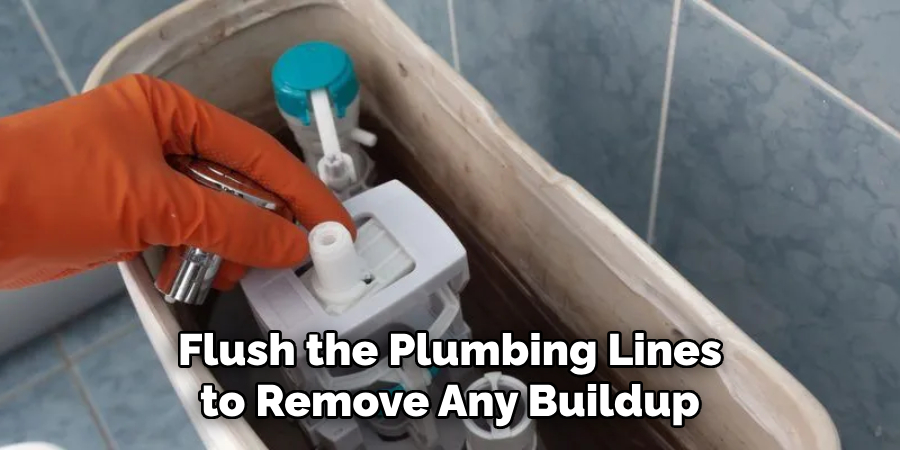
It is important to also check the plumbing lines for any leaks or cracks that may be contributing to yellow water in the toilet. If there are any issues, it is best to call a professional plumber to fix them before they become bigger problems.
10. Consult a Professional Plumber:
If you’re unable to resolve the issue of yellow water in the toilet on your own, consider consulting a professional plumber for assistance. A plumber can inspect the toilet and plumbing system to identify the root cause of the problem and recommend appropriate solutions.
They may also perform maintenance tasks like flushing the plumbing lines or installing water treatment equipment to improve water quality and prevent yellow water in the future. Additionally, a professional plumber can advise on proper cleaning and maintenance methods to keep your toilet and plumbing system in good condition.
They can also offer advice on upgrading to more efficient and eco-friendly plumbing fixtures to help reduce water usage and costs. So, when facing yellow water in your toilet, don’t hesitate to seek the expertise of a professional plumber for a long-term solution. Your health and comfort are worth investing in. Remember, prevention is always better than cure.
Conclusion
In conclusion, addressing yellow water in the toilet is essential for maintaining a clean and hygienic bathroom environment. This comprehensive guide offers a range of solutions and tips to effectively resolve this issue. From quick fixes to long-term solutions, individuals can choose the method that best suits their situation.
Whether it’s flushing the toilet multiple times, cleaning the toilet bowl with mild cleaners, or addressing underlying plumbing issues, taking proactive steps is key to restoring clear water in the toilet. Additionally, implementing DIY cleaning solutions and seeking professional assistance for persistent problems ensures thorough resolution. Thanks for reading, and we hope this has given you some inspiration on how to fix yellow water in toilet!

